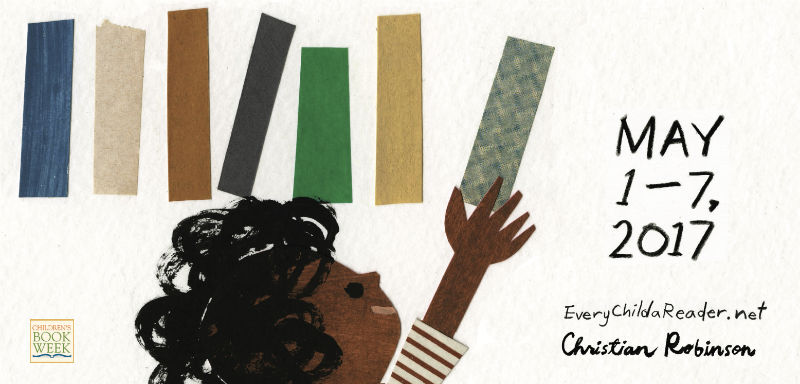Strike Up the Band and KissME: Swing dance fest jitterbugs back to Ann Arbor

Time to jump, jive, and wail at the 9th annual KissME (Keep It Simple and Swing) in Ann Arbor! The event brings "hundreds of people together for a weekend of music, fun, and dancing," says organizer Kenny Schabow.
While many folks enjoy jitterbugging about, they might not know swing dancing's storied history. When swing jazz took off in the 1920s, the style of dance we now call “swing” exploded right along with it. While the origins of jazz and swing dancing predate that era, its popularity began hitting the mainstream in the early decades of the 20th century. Dozens of styles were being flaunted in the dance halls with the most popular being the Lindy Hop, the Charleston, and the shag.
"Terror in Ypsilanti" recounts the true story of The Michigan Murderer

"Notice of a psychotic killer in their midst did not resonate with the Ypsilanti, Michigan community in the summer of 1967."
So begins Terror in Ypsilanti, the award-winning book by Gregory Fournier. Not only did this idea not resonate with inhabitants of our area, but the term “serial killer” hadn’t even been devised yet; nonetheless, that is exactly who was stalking young women in Ypsilanti.
John Norman Collins ultimately was suspected of the deaths of seven women over a three-year period. Fournier, who was teaching in Ypsilanti at the time, lived a block away from Collins and “had several negative encounters with him.” But it wasn’t until he “saw (Collins’) face plastered across newspapers that I recognized him.”
Elly Griffiths' "The Chalk Pit" continues one mystery's best current series

Secret societies, cannibalism, and ritual killings? Bones found in an old chalk-mining pit? Labyrinths and tunnels and a forensic specialist who keeps finding herself embroiled in murders?
Where do we find all of this?
Deep inside The Chalk Pit, the ninth book in the Ruth Galloway series by Elly Griffiths.
The novel finds our intrepid forensic archeologist far beneath the streets of Norwich, England. The seed for the setting of this book was planted when Griffiths gave a talk at an independent bookstore in Norwich.
“The manager happened to mention that there was a tunnel under the store and asked if I wanted to see it,” Griffiths says. “(The chalk tunnel) was low-ceilinged and damp and led off into darkness. (My research) found that you can walk the length of Norwich underground because there are so many old chalk-mining tunnels, crypts, and undercrofts.”
Cozy Up: Meg Macy’s "Bearly Departed" at Nicola's

Most everyone had a favorite teddy bear growing up; some of us maybe had 10 or 12 or 15 of them. And how many of us imagined what it would be like to work in a teddy bear factory?
Silver Hollow resident Sasha Silverman, the main character in Meg Macy’s Bearly Departed, actually does work in a teddy bear factory, but it's not all fuzzy snuggles on the assembly line. She also must solve the mystery of who killed the villainous sales rep and left his body in her factory.
Local readers will note that Sasha’s teddy bear factory has some similarities to the one formerly located in nearby Chelsea. “I got my first bear (a Paddington) from Harrods, shortly before my daughter was born. That started my collection," Macy said. "I have all kinds of stuffed bears, Beanie baby bears, figurines, plaques, embroidered bear pictures, and a silky Chelsea bear.”
Still Grinning: Terri Tate defeats cancer with "A Crooked Smile"

Some believe that there are two ways of looking at the world: as if everything is a miracle, or as if nothing is. Author Terri Tate prefers the former, and this belief guides her attitude and her memoir.
The Grosse Pointe native and former Ann Arbor resident will be reading from her debut book, A Crooked Smile, on Sunday, June 11, at 1 pm at Nicola’s Books. That Tate is here to share her journey with us is somewhat miraculous.
In 1991, Tate’s doctors diagnosed her with oral cancer and gave her a two percent chance of survival; however, “the book is not fundamentally a cancer memoir,” Tate shares. “It is mostly about the journey involved.”
Prior to becoming a writer, Tate worked as a nurse, a hypnotherapist (the first one in the Ann Arbor phone book!), and public speaker. And then came the oral cancer diagnosis.
Space, Race: Carey F. Whitepigeon launches "Daughter of Dawn & Darkness" at Nicola's Books

Carey F. Whitepigeon's debut novel, Daughter of Dawn and Darkness: Book 1, Spark Aflight, tells the tale of a 17-year-old woman straddling two familial cultures. In this case, her parents not only come from different cultures but from entirely different planets!
"(The protagonist) Vivian grew up amongst her father’s people and knows nothing about her mother’s planet and people," said Whitepigeon, who grew up in Michigan and lives in Ann Arbor with her husband and three children. "After receiving a letter from her maternal uncle, she becomes obsessed with getting to know more about that side of her family.”
Shades of Gray: Lori Rader-Day discusses "The Day I Died" at Aunt Agatha's

“This is a book that will get under your skin and stick with you,” said Aunt Agatha’s co-owner Robin Agnew of Lori Rader-Day’s psychological thriller The Day I Died. “It’s a book that shows multiple sides of the story, not in terms of black and white but shades of gray.”
On Thursday, May 18, at 7 pm, Rader-Day joins Aunt Agatha’s monthly book club to discuss her novel. The author is the recipient of the 2016 Mary Higgins Clark Award and the 2015 Anthony Award for Best First Novel. The Day I Died tells the story of Anna Winger, a handwriting expert who is called into an investigation of a missing toddler. Anna has tried to keep her secrets hidden in the past as she moves along in life with her teenaged son. But everything comes spilling out when her son disappears and she is forced to confront painful memories from a past from which she is still trying to hide.
One World, Many Stories: Children’s Book Week

Libraries, schools, and bookstores have celebrated Children’s Book Week for almost 100 years. The weeklong celebration began with a librarian’s belief that literacy and children’s books can be saviors for kids. While the things we read and the way we read have changed over the years, books remain life-changers for kids. Several local events will honor Children’s Book Week, which takes place May 1-7.
“It is so important for children to have a book in their hand and to read it, sleep with it, carry it around, have it with them," said Lynn Pellerito Riehl, events manager for Nicola’s Books in Ann Arbor. "Many of us still harken back to the childhood books we read that fostered our love for reading and opened our minds to different ideas."
Two U-M exhibitions examine the battle for equality on campus

Two local art exhibits highlight equality on University of Michigan’s campus: one focuses on two particular campus buildings while the other looks at the students and campus as a whole.
"Constructing Gender: The Origins of Michigan's Union and League" at UMMA
You’ve driven by them dozens of times: the Michigan Union and the Michigan League. You know that inside these iconic campus buildings are study rooms, eateries, visitor suites. But did you know they were originally envisioned as being separate facilities for male and female students?
The UMMA exhibit “Constructing Gender: The Origins of Michigan’s Union and League” highlights the fascinating -- and very gendered -- beginnings of these structures. Early planners intended the entire university to be gender segregated. President Marion Burton said in 1921, “[M]en’s interests will center south and west of campus … while new buildings for women will go to the north of campus” and these buildings were no exception. The Union (opened in in 1919) was intended for men while the League (opened in 1929) was to be the domain of women. To raise funds for the buildings, fundraisers pitched the League as “The House That Jill Would Build” while the Union used the slogan, “What 2,000 Michigan men go after they are certain to get.”
Gift of Character: David Pratt launches "Wallaçonia" at Common Language

We all feel isolated during adolescence. But Jim Wallace, the main character in Ann Arbor-based author David Pratt’s new book, Wallaçonia, does something about it.
Feeling alienated from his own world, Jim imagines his parents’ yard and woods as his private country -- the titular Wallaçonia. But as we all must do, Jim grows up and realizes he has to leave behind not only his secret place but certain assumptions he made about himself.
Bookseller Pat Baxter asks Jim to work at his store with him over Christmas break. Jim at first feels conflicted about working for the openly gay Baxter. But when Jim’s father makes fun of Baxter, Jim takes a stand by working for him. He feels he should stand by this man and be an ally to Baxter. Through the course of the book, Jim realizes that is more than an ally -- he is gay himself.
“The book is more about the 'how' than the 'what,'” Pratt said. “Jim has some of the same insecurities as Pat and it was important to me to have a setting where they could talk and get to know each other.”


































